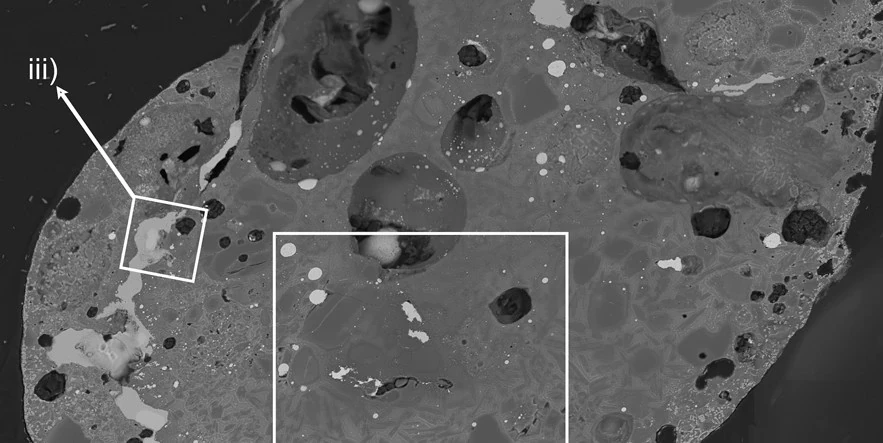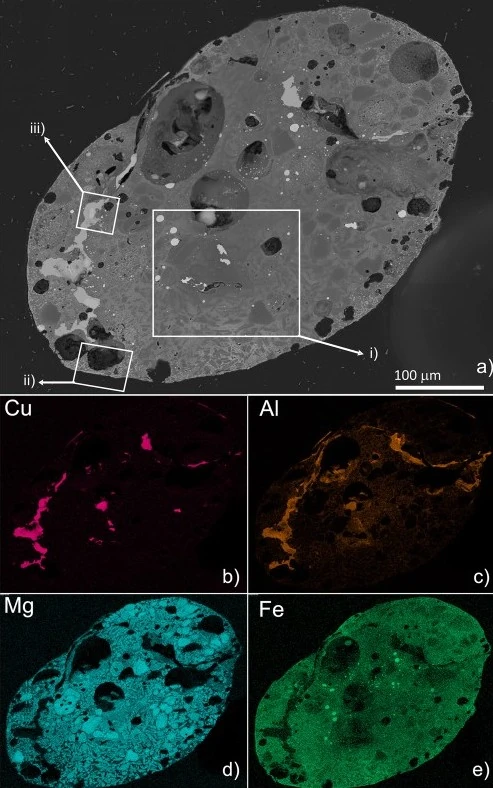Unique aluminum-copper alloy quasicrystals found in Mount Gariglione meteorite

The Italian Space Agency (ASI) announced the discovery of a rare meteorite containing aluminum-copper alloy quasicrystals in Mount Gariglione, Calabria, marking a significant advancement in planetary sciences.
- This discovery opens new avenues for understanding the origins of materials in the Solar System and the formation mechanisms of quasicrystals, promising exciting developments in the fields of mineralogy, planetary science, and beyond.
This week, the Italian Space Agency (ASI) reported a groundbreaking find in the field of planetary sciences—a meteorite embedded with a rare aluminum-copper alloy and even rarer quasicrystals, located in Mount Gariglione, Calabria. Spearheaded by an all-Italian research team, this discovery sheds light on the presence of “forbidden symmetry” materials within cosmic entities, as detailed in a publication from February 12, 2024, in Communications Earth & Environment.
The meteorite, named FB-A1, is characterized by an extraordinary composition of Al51.7(6)Cu30.8(9)Fe10.3(4)Si7.2(9), or ideally Al52Cu31Fe10Si7. This find not only introduces a new icosahedral quasicrystal to the scientific community but also marks the third instance of such unique intermetallic alloys in extraterrestrial bodies, following the renowned Khatyrka meteorite discovery.
Researchers from the University of Bari, in collaboration with the University of Florence and the ASI, conducted the study. This discovery is heralded as a testament to the power of Citizen Science, with the meteorite initially discovered by a collector who noticed its unusual metallic sheen and submitted it for academic analysis. The analysis confirmed the meteorite’s extraterrestrial origin and its unprecedented quasicrystal content.

Quasicrystals, with their unique non-repeating atomic patterns, were first identified in the 1980s by Dan Shechtman, who received a Nobel Prize for his work. This discovery in southern Italy, far from the first quasicrystal discovery site, emphasizes the global reach and collaborative nature of modern scientific inquiry.
The discovery is a milestone for planetary sciences and for solid-state physics and chemistry, illustrating that quasicrystals can spontaneously form in nature and remain stable over geological timeframes. The meteorite is currently housed in the Museum of Earth Sciences at the University of Bari, with plans to establish a section dedicated to extraterrestrial samples.
References:
1 A naturally occurring Al-Cu-Fe-Si quasicrystal in a micrometeorite from southern Italy – Agrosì, G., Manzari, P., Mele, D. et al. – Commun Earth Environ 5, 67 (2024). https://doi.org/10.1038/s43247-024-01233-w – OPEN ACCESS
Featured image credit: The authors

Commenting rules and guidelines
We value the thoughts and opinions of our readers and welcome healthy discussions on our website. In order to maintain a respectful and positive community, we ask that all commenters follow these rules.